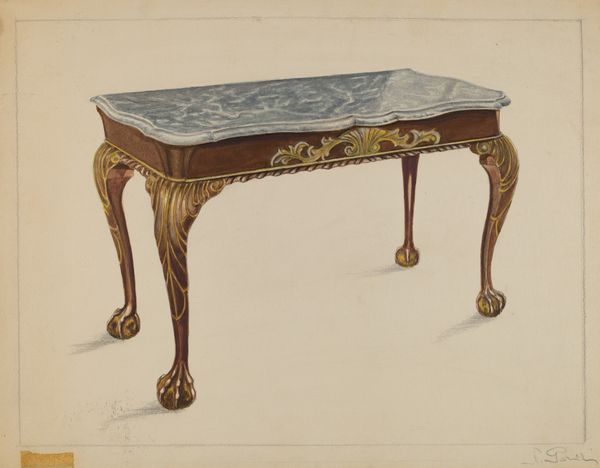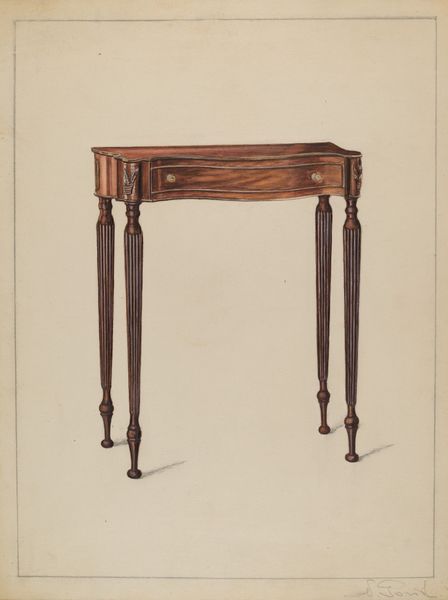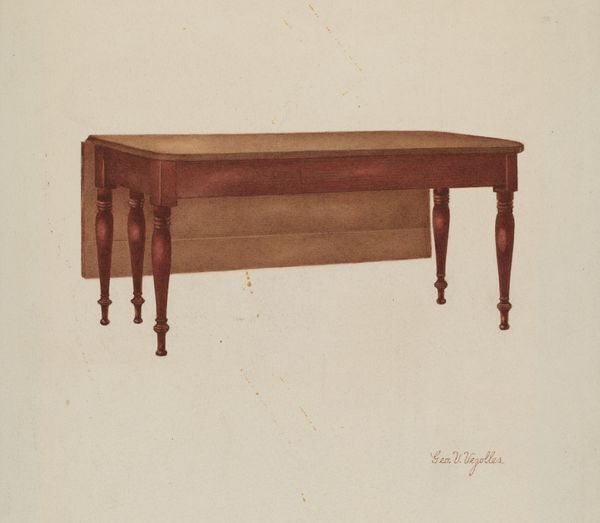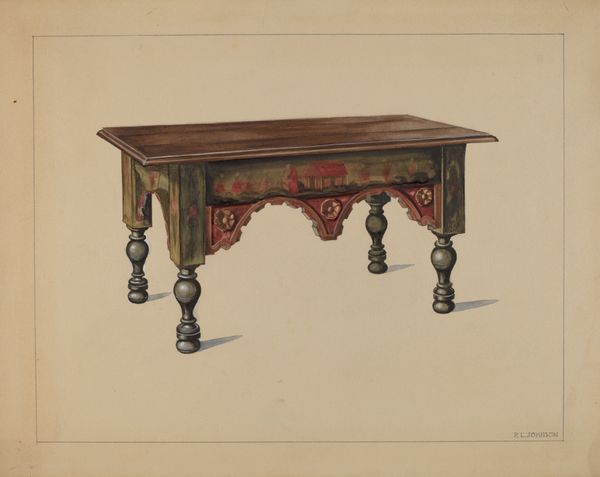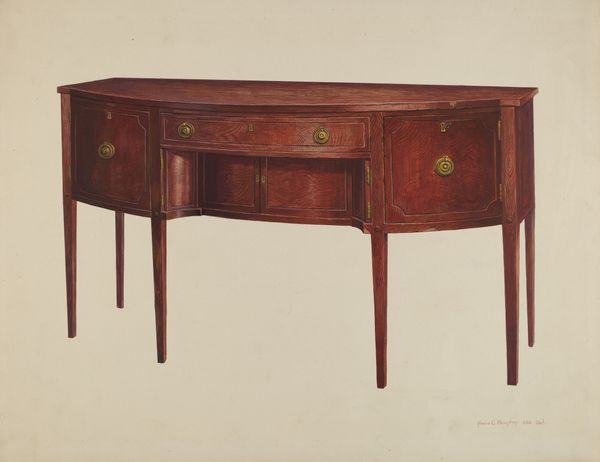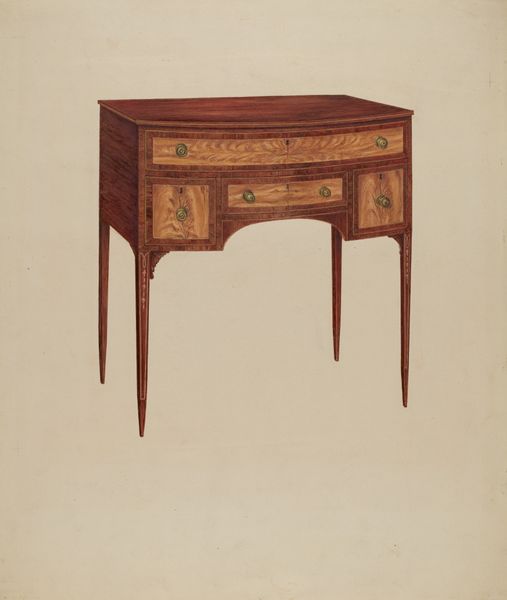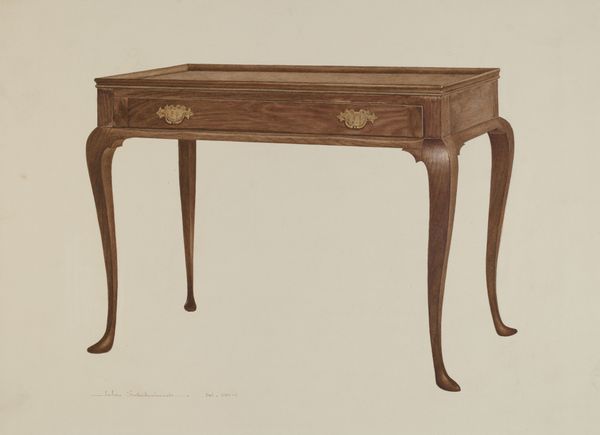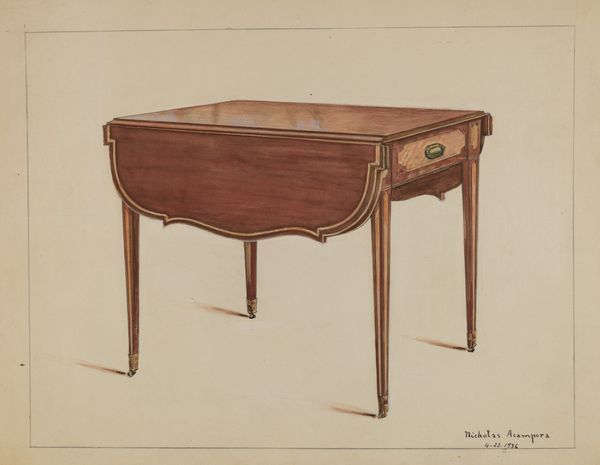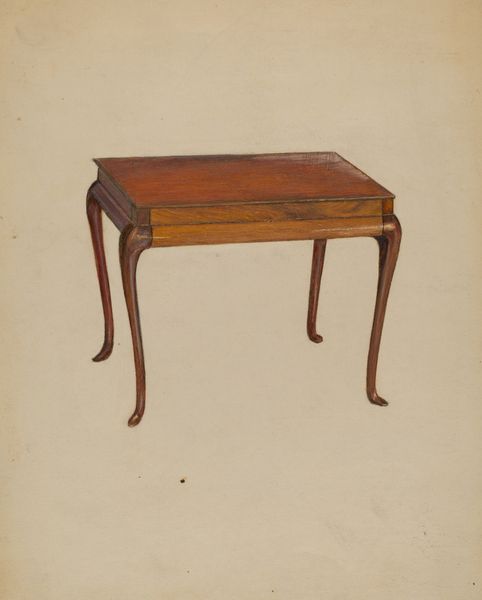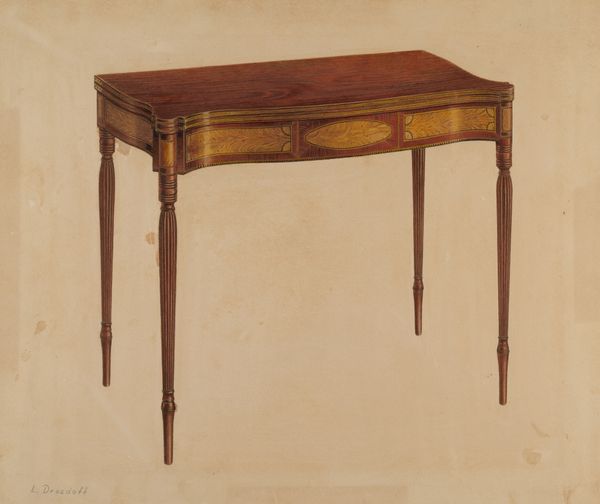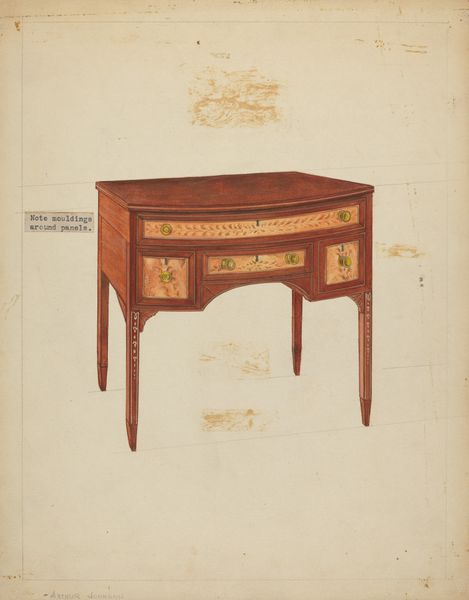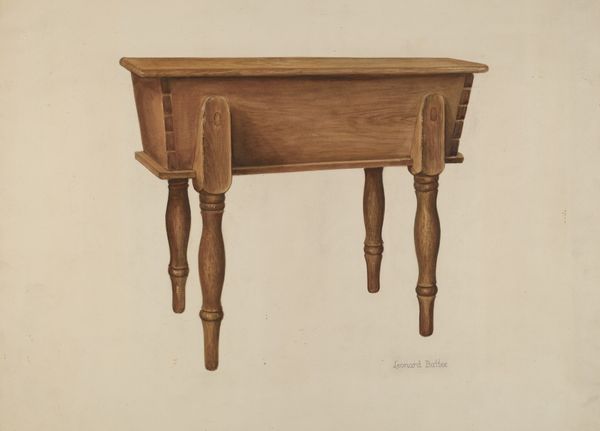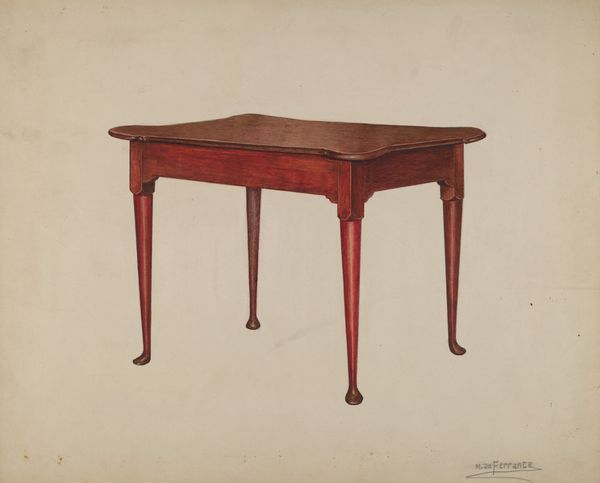
drawing, watercolor
#
drawing
#
water colours
#
watercolor
#
decorative-art
#
watercolor
Dimensions: overall: 22.9 x 30.5 cm (9 x 12 in.) Original IAD Object: none given
Copyright: National Gallery of Art: CC0 1.0
Curator: Let’s consider Ferdinand Cartier's "Card Table," created sometime between 1935 and 1942. It’s rendered with watercolors and pencil, showcasing a decorative-art style. Editor: First impression? It's so delicate, almost like a dream of a table rather than a real one. The watercolor gives it this ethereal quality. The long legs give me this sense of precarious elegance, doesn't it feel like it might just float away? Curator: The artist meticulously uses watercolor to depict the subtle textures of wood and the sheen of the decorative inlays. Examining how it represents class, we notice the stylistic shift in furniture design from heavier, more ornamented pieces of the past towards lighter forms. It's evocative of a desire for something airy, reflective of mid-century tastes. Editor: Absolutely. It whispers rather than shouts "luxury." Those delicate fluted legs seem almost too slender to support a serious card game, more like a perch for teacups and gossip. I wonder, what stories this table would have, were it a real object. Perhaps hushed conversations, scandalous accusations and stolen glances during a game of chance? Curator: Such tables became cultural stages for socialization and negotiation, especially amongst women in specific social strata. The imagery associated with these card games extends beyond leisure; they can signify power dynamics, strategic thinking, and economic agency. Editor: Hmm, perhaps it symbolizes the delicate balance of power, where appearances matter just as much as the hand you’re dealt. Did World War 2 interrupt his craft? It makes you appreciate objects made by those who persisted against such a dramatic cultural backdrop. Curator: It indeed marks a period that demanded functional items but still subtly hinted at an upper-class gentility, a period on the brink of massive cultural shifts. Editor: So, next time I find myself at a serious game of cards, I will take it much less seriously with a mental picture of a floating table, like the one in this image. Curator: And I, next time I research similar works, will look through the lens of economic activity, seeing tables as stages of social life and transaction.
Comments
No comments
Be the first to comment and join the conversation on the ultimate creative platform.
